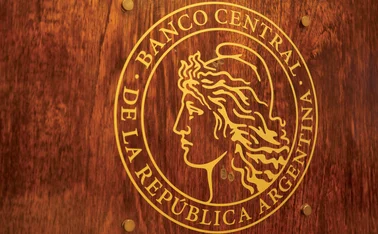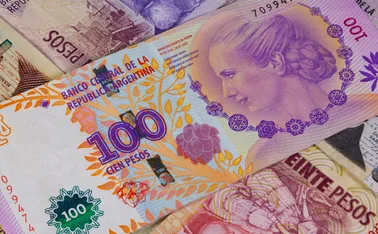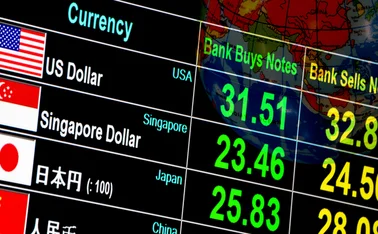

RCEP and renminbi’s role as a reserve currency
Will the new Asia-Pacific (Apac) economic partnership support the use of renminbi in settlement and as a reserve currency?
The Regional Comprehensive Economic Partnership (RCEP), a free-trade agreement between 15 Apac countries, took effect for most members at the beginning of this year. At the centre of the deal sits China, the world’s largest exporter and second-largest economy. Aside from forging closer trade ties with its neighbours, RCEP will give China new opportunities to promote its long-term goal of internationalising the renminbi, some analysts say.
RCEP spans 10 Association of Southeast Asian Nation (Asean) countries, Australia, China, Japan, the Republic of Korea and New Zealand. The 15 members collectively account for around 30% of the world’s population (2.2 billion) and 30% of global GDP (US$26 trillion). Before RCEP, Asean had already signed free-trade agreements with individual countries, including China, Japan and the Republic of Korea, the three largest economies in Asia. However, RCEP is the first free-trade agreement integrating the three leading powers into a single trading bloc. The deal aims to reduce or eliminate around 90% of the tariffs on imports between member states within 20 years. It will also establish common rules in areas such as investment, e-commerce, intellectual property, competition and government procurement.
Renminbi as a payment currency
While RCEP members do not envisage a monetary union such as the eurozone, Chinese policymakers clearly see opportunities ahead for renminbi. In a 2021 report, the People’s Bank of China said RCEP will extend the scope for the use of renminbi in trade and investment activities. “The use of the renminbi in commodities trading already had a good start and is expected to be a growth pillar for the cross-border use of the renminbi,” it states. The central bank also noted that new trade modes under the pact, such as cross-border e-commerce, would help promote the use of the currency in foreign trade.
The People’s Bank of China reiterated its commitment to internationalising the renminbi in a September report, saying it would push forward the project “steadily and prudently”.
China has been pushing to build the renminbi’s status as an international currency for trade settlement, investment and foreign currency reserves since 2007. Over the years, the country has helped develop offshore renminbi centres and gradually liberalised its capital accounts through various schemes. By the end of 2021, the People’s Bank of China had set up bilateral currency swap lines with 40 central banks, totalling more than CNY4 trillion ($562 billion), data from the central bank shows. China also launched its cross-border interbank payment system in 2015, which clears and settles renminbi-denominated payments, as an alternative to the internationally dominant Swift network.
Edwin Lai, professor of economics at the Hong Kong University of Science and Technology, says RCEP will help bolster the region’s use of the renminbi via increased renminbi trade settlement. “How big would such positive impact be?” he asks. “A stronger trading relationship with China would mean that firms in these countries will need more renminbi in order to trade with China.” Furthermore, he adds that South-east Asian countries are beginning to accumulate more renminbi to trade with China.
The renminbi is now the world’s fifth-largest currency for global payments, according to September data from Swift. It accounted for 2.44% of global payments, up from 1.97% in September 2020 and closely trailed the yen (2.88%). But the currency is still far behind sterling (6.54%), the euro (35.15%) and the US dollar (42.31%) as a payment currency. Between September 2020 and September 2022, global payment shares of the US dollar and renminbi rose while those of the yen, sterling and euro fell.
In his book, One currency, two markets: China’s attempt to internationalize the renminbi, Lai predicted the renminbi would likely become the world’s third payment currency by 2030. He said it would take up approximately 6–7% of global payments, surpassing yen and sterling.
Chris Leung, chief China economist at Singapore’s DBS Bank, argues that China is using RCEP as one its three key pillars to internationalise the renminbi. Other pillars include boosting yuan-denominated oil trades, for example with Saudi Arabia, and increasing renminbi trade settlements with Latin America by investing in local renewable energy projects. “As trade volume grows between China and fellow members, especially when they start building up trade surplus, it would then be easier for Beijing to lobby renminbi settlement in a gradual manner,” he says.
Some analysts are less sure whether RCEP would significantly increase trade settlement in renminbi.
David Dollar, senior fellow at the Brookings Institution, says the deal should increase the renminbi as a settlement currency, as it will increase trade between China and its east Asian partners. “Still, the renminbi share of settlement is low and will probably only grow gradually over time,” he adds.
Kathy Walsh, professor of finance at the University of Technology Sydney, says there has not been “a great appetite” for settling trade in renminbi from either China or its trade partners. “From an Australian perspective, much of the trade with China is one-directional: companies either export to or import from China, so there is no need to recycle the renminbi,” she says. “From China’s perspective, there is added flexibility to transact in US dollars.”
Renminbi as a reserve currency
There is clear evidence that central banks worldwide have been diversifying away from the US dollar in recent years and some have increased their holdings in renminbi.
In a working paper published by the International Monetary Fund (IMF) in March, economists Serkan Arslanalp, Barry Eichengreen and Chima Simpson-Bell argued there had been a “stealth erosion” of the US dollar’s share of international reserves over the past 20 years. They said the decline reflects “active portfolio diversification” by central bank reserve managers and is not a by-product of changes in exchange rates and interest rates. One-quarter of the shift has gone into the renminbi and three-quarters into the currencies of smaller countries. The change signals an ongoing movement away from the dollar and a “recent, if still modest, rise” in the role of the renminbi, the economists said.
The renminbi’s share of the world’s foreign exchange reserves was 2.88% by the second quarter of 2022, up from 1.08% when it was first included in the IMF’s special drawing rights basket in Q4 2016. The renminbi is now the fifth most held currency in global FX reserves, IMF data shows, behind sterling (4.88%), the yen (5.18%), the euro (19.77%) and the US dollar (59.53%). Around 80 central banks have included the renminbi in their foreign reserves, according to the People’s Bank of China’s estimations.
Experts interviewed by Central Banking generally agree that RCEP should have a positive impact on the renminbi’s status as a trade settlement currency. But some believe that structural factors, including the openness of China’s capital account, are more important when it comes to determining the renminbi’s reserve currency status.
Walsh says the implementation of RCEP is a strong signal of China’s importance in the region, and this may be reflected in an increase in central banks’ reserve allocations.
Lai, meanwhile, says central banks will have a stronger incentive to hold more renminbi in their foreign reserves when their countries trade more with China. “If a country trades more with China, they want their exchange rate to the renminbi to be stable,” he says. This requires the central bank to hold more reserves of the renminbi, Lai adds, so it can intervene in the FX market if needed and provide renminbi funds to firms as a last resort for a lender.
However, Lai believes boosting trade settlement in renminbi will not have a “first-order” impact on its reserve currency status. A much more important factor is the size of the settlement of trade in financial assets, such as bonds, stocks and derivatives in renminbi, he adds. This is because global financial transactions are much larger than trade transactions, and financial asset trade settlement in renminbi is still small today.
Unlike the US, China’s financial markets are still not “thick, broad and liquid” enough for the renminbi to become a major reserve currency, Lai continues. Central banks worldwide are holding US Treasury bills because they are considered a safe asset. The US Treasury bills market is also the largest in the world and very liquid, which allows central banks to buy and sell their assets more easily to manage their exchange rates without adversely affecting their prices. By contrast, foreign ownership of Chinese government bonds issued by the Chinese Ministry of Finance is much smaller.
Dollar agrees: “Reserve holdings of renminbi are not large because it is difficult to use. Moving money in and out of China is still bureaucratic and subject to capital controls. China’s capital markets are not deep and transparent.”
Countries hold reserves in order to move quickly in times of emergency and central banks cannot count on quick access to renminbi in this situation, Dollar says. “China would have to become much more open and transparent in order to make its currency attractive as a reserve asset.”
Le Xia, chief economist for Apac at BBVA Research, argues that RCEP may not have a major direct impact on the renminbi’s reserve currency status. But the deal, coupled with US sanctions against Russia, may help strengthen trade and supply chains in the region.
He notes that past studies showed that international use of the renminbi is closely linked to people’s expectations of China’s economy and the financing cost of the US dollar. “When the US dollar’s financing cost rises, leading to a shortage of the US dollar, more people will shift to using the renminbi,” Xia says.
The renminbi’s road to internationalisation and its future as a reserve currency also depends on China’s economic performance, Xia says, adding that China’s zero-Covid strategy has affected its economic development. But, he says renminbi internationalisation is deepening: “If there aren’t any major shocks to China’s economy, I remain optimistic.”
Only users who have a paid subscription or are part of a corporate subscription are able to print or copy content.
To access these options, along with all other subscription benefits, please contact info@centralbanking.com or view our subscription options here: subscriptions.centralbanking.com/subscribe
You are currently unable to print this content. Please contact info@centralbanking.com to find out more.
You are currently unable to copy this content. Please contact info@centralbanking.com to find out more.
Copyright Infopro Digital Limited. All rights reserved.
As outlined in our terms and conditions, https://www.infopro-digital.com/terms-and-conditions/subscriptions/ (point 2.4), printing is limited to a single copy.
If you would like to purchase additional rights please email info@centralbanking.com test test test
Copyright Infopro Digital Limited. All rights reserved.
You may share this content using our article tools. As outlined in our terms and conditions, https://www.infopro-digital.com/terms-and-conditions/subscriptions/ (clause 2.4), an Authorised User may only make one copy of the materials for their own personal use. You must also comply with the restrictions in clause 2.5.
If you would like to purchase additional rights please email info@centralbanking.com test test test







